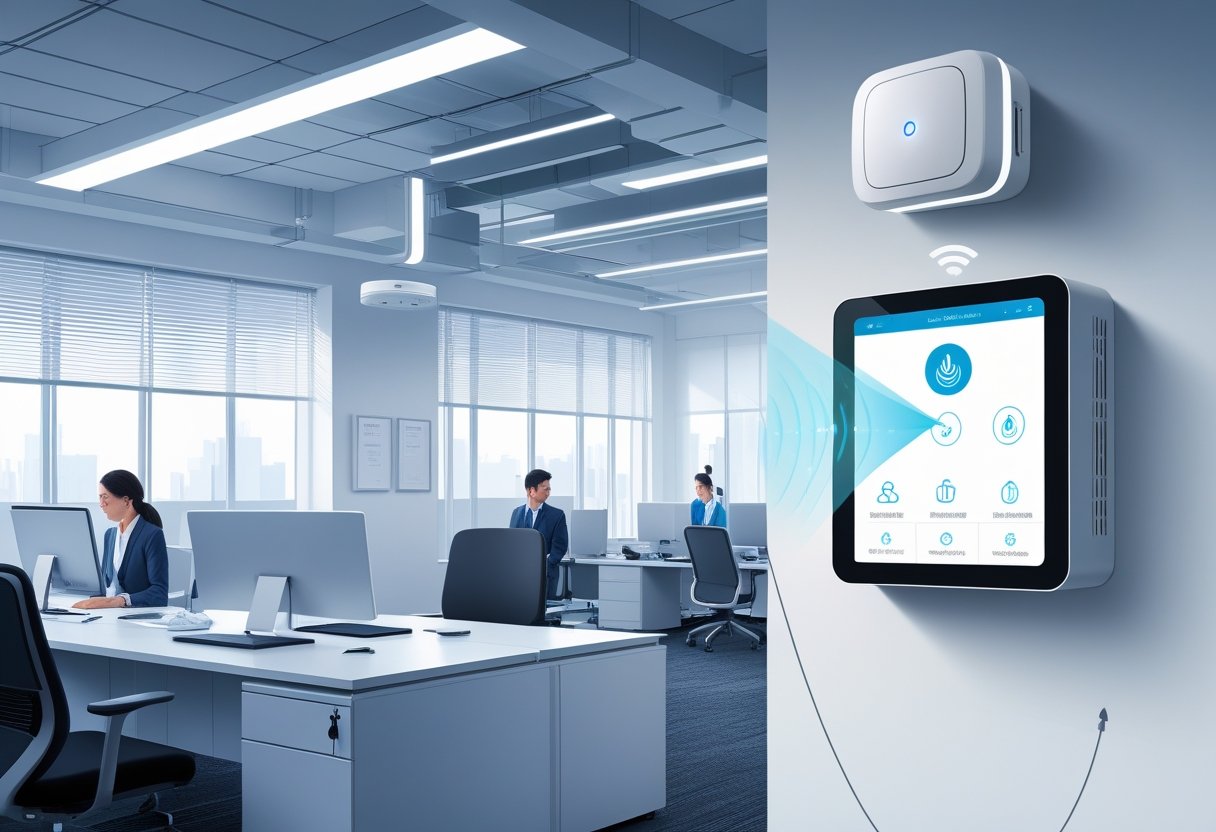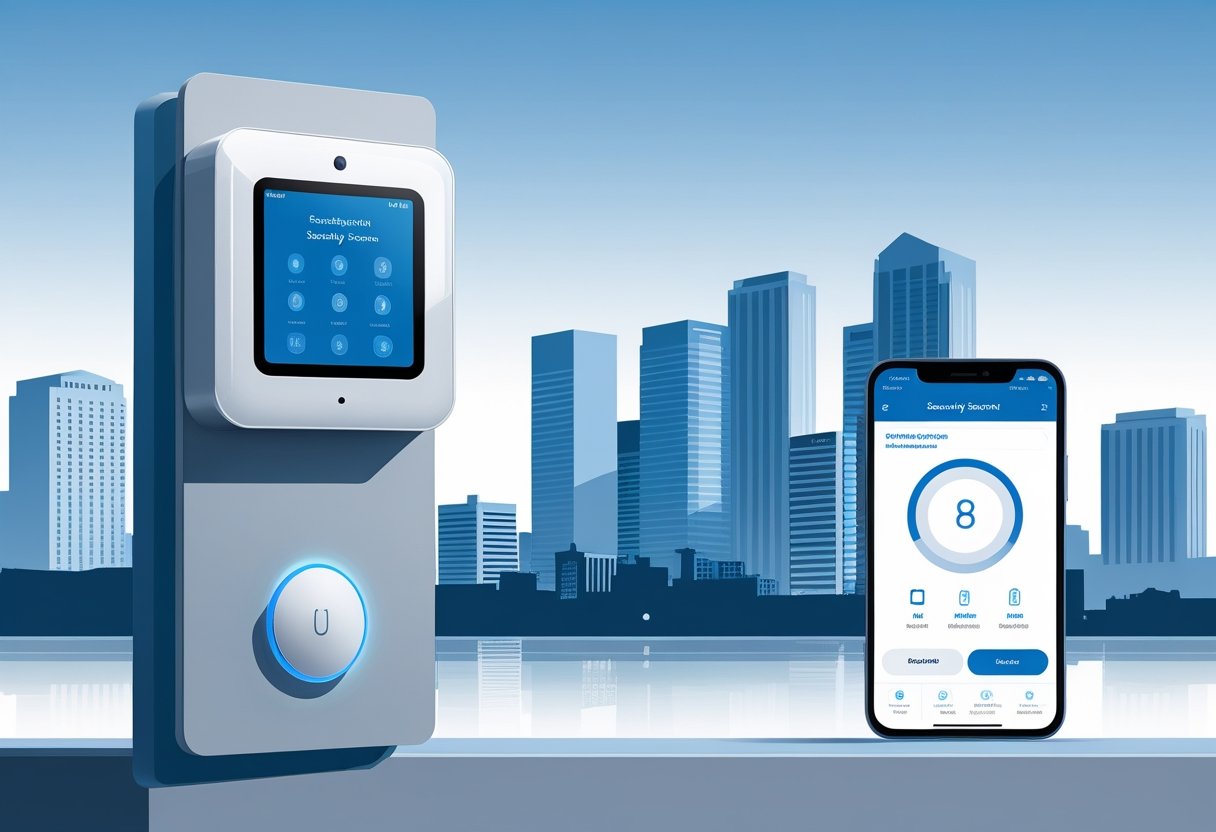When it comes to ensuring safety in the workplace, having a reliable fire alarm system is crucial. The best wireless fire alarm systems for offices not only provide top-notch protection but also offer flexibility and streamline installation processes. Choosing the right wireless fire alarm system can safeguard your employees and assets effectively while complying with safety regulations.
In the greater Houston area, several options stand out for their advanced technology and user-friendly features. These systems utilize radio frequency signals to communicate between devices, minimizing wiring disruptions, which is particularly beneficial in busy office environments. You can find systems that fit your specific needs, whether you require a budget-friendly solution or a more sophisticated network that can integrate with existing security measures.
Investing in a quality wireless fire alarm system is essential for your peace of mind. By ensuring that your office is equipped with the latest technology, you not only enhance safety but also demonstrate responsibility towards your employees and compliance with local fire safety regulations.
Key Features of the Best Wireless Fire Alarm Systems for Offices
When choosing a wireless fire alarm system for your office, it's crucial to focus on specific features that enhance safety and operational efficiency. The best systems offer advanced technology, reliable detection, and straightforward installation to meet your business needs.
Wireless Technology Benefits
Wireless fire alarm systems utilize advanced radio frequency technology to operate without extensive wiring. This flexibility allows for strategic placement of detectors throughout your office without the hassle of running cables.
You can expect greater reliability and quicker setup times compared to traditional wired systems. Additionally, wireless systems often provide real-time alerts, allowing you to receive notifications directly on your smartphone.
This feature is particularly beneficial if you’re away from the office and need immediate updates on potential fire hazards. Devices within these systems, like smoke detectors and heat sensors, communicate seamlessly with a central control panel, enhancing overall safety.
Comprehensive Detection Capabilities
The best commercial fire alarm systems are equipped to handle diverse fire detection needs. An effective wireless fire alarm system includes various sensors, including smoke, heat, and carbon monoxide detectors.
These units work together to ensure comprehensive coverage, immediately detecting any potential threats. Some systems also allow for manual activation points for emergencies, enabling quick alerts in critical situations.
Integration with existing security systems ensures that fire detection is part of your broader safety measures, enhancing peace of mind. This combination of capabilities ensures that your office is protected from various fire hazards.
Ease of Installation and Scalability
Installing a wireless fire alarm system is typically much simpler than its wired counterparts. You can quickly place and configure units without disrupting your office environment.
Scalability is another prime feature; as your business grows, you can easily add more detectors and components to your system without significant changes. This adaptability allows you to customize your fire alarms according to your office layout and specific safety requirements.
Additionally, most systems offer user-friendly interfaces for monitoring and management, allowing you to oversee safety protocols efficiently. This ease of use is essential when ensuring compliance with fire safety regulations in Houston.
Types of Fire Detectors and Sensors for Office Environments
Choosing the right fire detectors and sensors is essential for ensuring safety in your office. Different types serve specific functions, detecting various fire-related hazards effectively. Here are the primary options you should consider.
Smoke Detectors
Smoke detectors are a critical component in fire alarm systems. They utilize two main technologies: ionization and photoelectric.
- Ionization smoke detectors: These are highly sensitive to fast-burning fires, often caused by paper or flammable liquids. They contain a small amount of radioactive material that ionizes air and helps detect smoke particles quickly.
- Photoelectric smoke detectors: These are better suited for smoldering fires, like those from upholstery. They use a light beam and a sensor to detect smoke, triggering an alarm when the light is obstructed.
For maximum safety, consider using a combination of both types in your system. They ensure comprehensive coverage against different fire scenarios.
Heat Detectors
Heat detectors react to changes in temperature, making them ideal for certain office environments. They can be categorized into two types:
- Fixed temperature heat detectors: These trigger an alarm when the temperature exceeds a predetermined threshold. They are effective in areas where smoke detectors may not be as reliable, like kitchens.
- Rate-of-rise heat detectors: These activate when they detect a rapid increase in temperature. This feature makes them useful in spaces where quick fire detection is crucial.
Heat detectors are particularly helpful in reducing false alarms that can occur with smoke detectors in areas like server rooms or storage spaces.
Flame Detectors
Flame detectors are specialized sensors designed to identify the presence of flames through various technologies. They can detect ultraviolet (UV), infrared (IR), or a combination of signals.
- UV flame detectors: These are highly sensitive and can detect flames from a distance. They work best in environments with minimal obstructions.
- IR flame detectors: These are excellent for detecting flames in various conditions, including smoke and dust.
Flame detectors are especially crucial in high-risk areas, such as laboratories or kitchens, where a fire could escalate quickly. Their rapid response can make a significant difference in preventing extensive damage.
Top Brands and System Recommendations
When selecting a wireless fire alarm system for your office, focusing on brand reputation and system features is essential. Here are some top brands that excel in providing reliable solutions for your safety needs.
Alarm Masters
Alarm Masters stands out as a leading manufacturer of fire alarm systems. Known for innovation, Alarm Masters offerings feature advanced wireless technology that provides seamless integration and effective monitoring.
You can expect high reliability with features such as early smoke detection, user-friendly interfaces, and robust emergency notification capabilities.
Their systems are designed for scalability, making them suitable for various office sizes. The Alarm Masters series is particularly popular among businesses in the greater Houston area, ensuring your workplace meets safety standards while enhancing response times.
Other Leading Brands
In addition to Alarm Masters, several other brands provide exceptional fire alarm systems, each catering to different needs.
Notable mentions include two local brands, both recognized for their cutting-edge technology and reliable performance in the commercial space.
Some brands fire alarm systems are designed for easy installation and user operation, making them a preferred choice for many offices. They offer versatile configurations, allowing you to scale up as your business grows.
Considering these brands will help you choose the most effective fire alarm system to safeguard your office.
Addressable vs. Conventional Wireless Fire Alarm Systems
When selecting a wireless fire alarm system for your office, understanding the differences between addressable and conventional systems is crucial. Each type has unique features that impact functionality, costs, and ease of maintenance.
Addressable Fire Alarm Systems
Addressable fire alarm systems offer advanced capabilities compared to conventional alternatives. Each device, such as smoke detectors and pull stations, has a unique identifier, providing precise location data during an emergency. This can significantly improve response times, as first responders can quickly pinpoint the affected area.
These systems are also scalable, making them suitable for both small offices and large commercial properties. The installation is straightforward, particularly in existing structures, as they require fewer wires. For those in the greater Houston area, consider an addressable fire alarm system to enhance safety and compliance standards.
System Scalability and Maintenance
When assessing system scalability, addressable fire alarm systems stand out for their adaptability. You can easily add or remove devices without extensive rewiring, making them an ideal choice for businesses that may expand or change over time.
Maintenance is more efficient with addressable systems, as they provide diagnostic information, allowing for quicker identification and resolution of issues. Conventional systems may require a more manual troubleshooting approach, leading to longer downtimes. For your office needs, choosing a scalable wireless fire alarm system can save time and reduce future costs as your business evolves.
Fire Alarm Monitoring and Reducing False Alarms
Effective fire alarm monitoring is crucial for maintaining the safety of your office environment. Additionally, implementing strategies to reduce false alarms can enhance operational efficiency and lessen disruptions. Understanding your monitoring options and managing alarm accuracy will contribute significantly to your overall fire safety plan.
24/7 Fire Alarm Monitoring Solutions
Having a 24/7 fire alarm monitoring solution ensures that alerts are promptly communicated to emergency services. These systems operate continuously, monitoring fire alarm signals in real-time. If a fire is detected, your monitoring service will quickly alert local authorities, reducing the response time.
Consider alarm systems that integrate with emergency services directly. This integration allows for automatic notifications, minimizing the risk of human error. In the greater Houston area, specialized providers offer tailored solutions that prioritize local responsiveness. Investing in such services can provide peace of mind knowing that help is always just a moment away.
Preventing and Managing False Alarms
False alarms can be disruptive and may lead to complacency among your staff. To mitigate this, it's essential to implement measures that reduce their occurrence. Start by ensuring all smoke detectors are regularly maintained and tested.
Consider using more advanced detection technology that can differentiate between smoke and steam, minimizing unnecessary alarms. Additionally, conducting regular training sessions for your employees about what triggers alarms can enhance awareness and reduce unintentional trips.
Establish clear communication with your monitoring service regarding alarm thresholds. This alignment helps ensure that only genuine threats trigger emergency responses, ultimately reducing the rate of false alarms and maintaining operational efficiency. By focusing on these areas, you can help create a safer office environment.
Ensuring Office Fire Safety and Compliance
Fire safety is essential for protecting your employees and assets. Compliance with local regulations ensures that your fire alarm systems are effective and up-to-date.
Best Practices for Office Fire Safety
Implementing best practices for fire safety helps create a secure work environment. Start by conducting regular fire drills to familiarize employees with evacuation routes and procedures. Ensure that all exits are clearly marked and unobstructed.
Install a comprehensive commercial fire alarm system tailored to your building's needs. This includes smoke detectors, heat detectors, and manual pull stations to maximize safety.
Regular inspections and maintenance of your fire alarm systems are crucial. Establish a schedule for testing equipment and replace batteries as needed. Provide ongoing training to staff so they understand the importance of fire safety and their roles during an emergency.
Fire Safety Solutions and Planning
Effective fire safety solutions involve strategic planning tailored to your office environment. Conduct a fire risk assessment to identify potential hazards and develop a response plan.
Many businesses in the greater Houston area adopt wireless fire alarm systems for their flexibility and efficiency. These systems can be easily integrated into existing infrastructures, ensuring compliance with local fire safety regulations.
Consider additional features like voice evacuation systems and remote monitoring to enhance safety. Engaging with local fire safety experts can help ensure that your solutions comply with current regulations.
Incorporate fire safety signage throughout your office to guide employees and visitors in case of an emergency. By prioritizing these aspects, you can significantly reduce the risks associated with fire hazards in your workplace.
Frequently Asked Questions
This section addresses common inquiries regarding wireless fire alarm systems suitable for office environments. Here, you will find specific information about features, manufacturers, and advancements in technology tailored to your needs.
What features should I look for in a commercial wireless fire alarm system?
When choosing a commercial wireless fire alarm system, prioritize features such as real-time monitoring, quick installation, and reliable connectivity. A system with a centralized control panel will help you manage alarms efficiently. Additionally, look for integrated notification systems that alert occupants immediately in case of fire.
Which manufacturers offer the most reliable wireless fire alarm systems for office environments?
Some of the most reliable manufacturers include Alarm Masters. These companies have established reputations for quality and dependability in fire safety solutions. Evaluating specifications and customer reviews will further aid you in selecting a brand that meets your specific office needs.
How do smart smoke detectors compare with traditional wireless fire alarm systems for office use?
Smart smoke detectors offer advanced features like mobile alerts and integration with other smart devices. They provide real-time updates, unlike traditional models, which generally depend on a central panel. This flexibility can enhance safety by ensuring immediate communication about potential hazards.
What are the benefits of choosing a hardwired smoke detector with a 10-year battery for an office setting?
A hardwired smoke detector with a 10-year battery reduces maintenance needs and ensures a longer lifespan. These systems typically offer better reliability and improved response time. In an office setting, this can provide peace of mind and continuous protection without the hassle of frequent battery replacements.
What are the latest advancements in wireless fire alarm technology for commercial spaces?
Latest advancements include enhanced wireless communication and integration with building management systems. Some systems offer real-time data analytics and remote monitoring capabilities. These innovations can help detect fires more efficiently and improve the overall safety of your commercial space.
How do Alarm Masters wireless fire alarm systems perform in office applications compared to other brands?
Alarm Masters wireless fire alarm systems are known for their reliability and features tailored for commercial use. They often integrate seamlessly with other security systems, offering robust protection. User reviews consistently highlight their ease of use and effectiveness in various office environments.
.svg)



.svg)


.svg)



